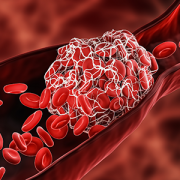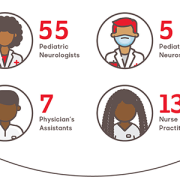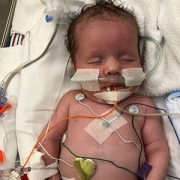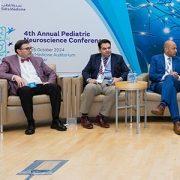Inducing strokes in newborns to treat hemimegalencephaly
“The number one thing people are perplexed by is how well these babies recover and how they can only live with half a brain,” said Tayyba Anwar, M.D., neonatal neurologist and co-director of the Hemimegalencephaly Program at Children’s National Hospital. “People think if a child has half a brain that’s damaged or dysplastic, how are they functioning? But babies are so resilient. It still amazes me.”
The big picture
Children’s National experts have pioneered a novel approach of inducing strokes to stop seizures and improve neurodevelopmental outcomes in newborns under three months old with hemimegalencephaly (HME).
The procedure, called an endovascular embolic hemispherectomy, can be safely used to provide definitive treatment of HME-related epilepsy in neonates and young infants, according to a study in the Journal of NeuroInterventional Surgery.
Prior to this approach, the standard treatment was an anatomic hemispherectomy — surgical removal of the affected half of the brain. But infants had to be at least three months old to undergo such a complex surgery. Delaying surgery meant the persistent seizures compromised the development of the healthy half of the brain.
What they’re saying
In this video, Dr. Anwar and Panagiotis Kratimenos, M.D., Ph.D., neonatologist and co-director of Research in Neonatology at Children’s National, discuss the critically important neonatal care provided to babies who undergo endovascular embolic hemispherectomy and how protocols have evolved with each case to make this less invasive approach a feasible early alternative to surgical hemispherectomy.
Drs. Anwar and Kratimenos are part of the multidisciplinary team of neonatal neurologists, neurointerventional radiologists, neonatologists and neurosurgeons performing endovascular hemispherectomies.










